Perched on the edge of a cliff, 900 metres above the Paro Valley in Bhutan, the Tiger’s Nest Monastery (Paro Taktsang) is the most iconic site in the country. Hiking to the monastery is a highlight of our Bhutan tours and the good news is, you don’t have to be super fit to do it! If you’re an adventurer, a spiritual seekers or a nature lover, follow our guide to know everything about this unforgettable experience.
Table of Contents
What is the Tiger’s Nest?
The Tiger’s Nest Monastery, known locally as Paro Taktsang, is a sacred Buddhist site situated in the Paro Valley of Bhutan. Built in 1692, the monastery clings to a granite cliff at an elevation 3,120 metres. It is believed to be the site where Guru Padmasambhava, also known as Guru Rinpoche, meditated in the 8th century after arriving on the back of a flying tigress. The flying tigress symbolizes power, spiritual transformation, and the taming of negative forces, which resonates deeply in Bhutanese mythology. This mystical tale gives the site its name, “Tiger’s Nest.”
The monastery consists of several small temples, shrines, and meditation caves connected by stairways carved into the rock face. Its stunning architecture and remote location make it one of the most iconic and visited landmarks in Bhutan.

Why is the Tiger’s Nest so culturally important for Bhutan?
The Tiger’s Nest holds immense cultural and spiritual significance for the people of Bhutan. Guru Padmasambhava is revered as the founder of Buddhism in Bhutan, and it is said that he subdued evil spirits and introduced Buddhist teachings from this very spot. The monastery is a pilgrimage site for Buddhists and a symbol of Bhutan’s deep connection to its spiritual roots.
For the Bhutanese, the Tiger’s Nest embodies devotion, faith, and perseverance. It is a place of meditation, prayer, and spiritual reflection.
How to hike to the Tiger’s Nest
The hike to the Tiger’s Nest usually happens at the end of our Bhutan tours. Not only because we want to “save the best for the end”, but also because by then you’ll have a deeper understanding of the country and a better appreciation of the importance of the site. Also, after a few days in the country, you’ll have adapted to the altitude.
The hike begins at the base of the Paro Valley, near the parking area and ticket counter. The trail is well-maintened and climbs uphill through pine forests, offering occasional glimpses of the monastery as you climb higher.
A step-by-step guide to the Tiger’s Nest hike (pun intended)
- Starting Point: The hike starts from the parking lot near the trailhead. You will pass a small row of shops selling souvenirs, snacks, and walking sticks (which can be rented). Your guide will give you an explanation of the place and let you know the meeting time. Don’t worry, we give plenty of time to our travellers so that everyone can make it to the top (and back!), no matter how long they take
- Midway Café: After about 1.5 hours of hiking, you will reach a halfway point where a café offers refreshments and spectacular views of the monastery. Many hikers take a short break here. It is also possible to rent local clothes here, for a photoshoot or to walk all the way to the top in local fashion.
- The Final Ascent: The trail continues upward, culminating in a steep staircase of around 700 steps. This is the most challenging section but also the most rewarding, as the Tiger’s Nest looms closer with every step.
- The Waterfall and Bridge: Before reaching the monastery, you’ll cross a small bridge over a waterfall. This spot provides one of the most iconic views of the Tiger’s Nest perched on the cliff.
- Arriving at the Monastery: Upon reaching the top, you’ll enter the monastery through a gate. One of your local guides will be waiting for you there with your ticket for the monastery itself.
The round-trip hike typically takes between 4-6 hours, depending on your pace and how much time you spend exploring the monastery:
- Parking Lot to Midway Café: Approximately 1.5-2 hours.
- Midway Café to Final Ascent: 1-1.5 hours.
- Exploring the Monastery: 1 hour or more.
- Descent: 1.5-2 hours.

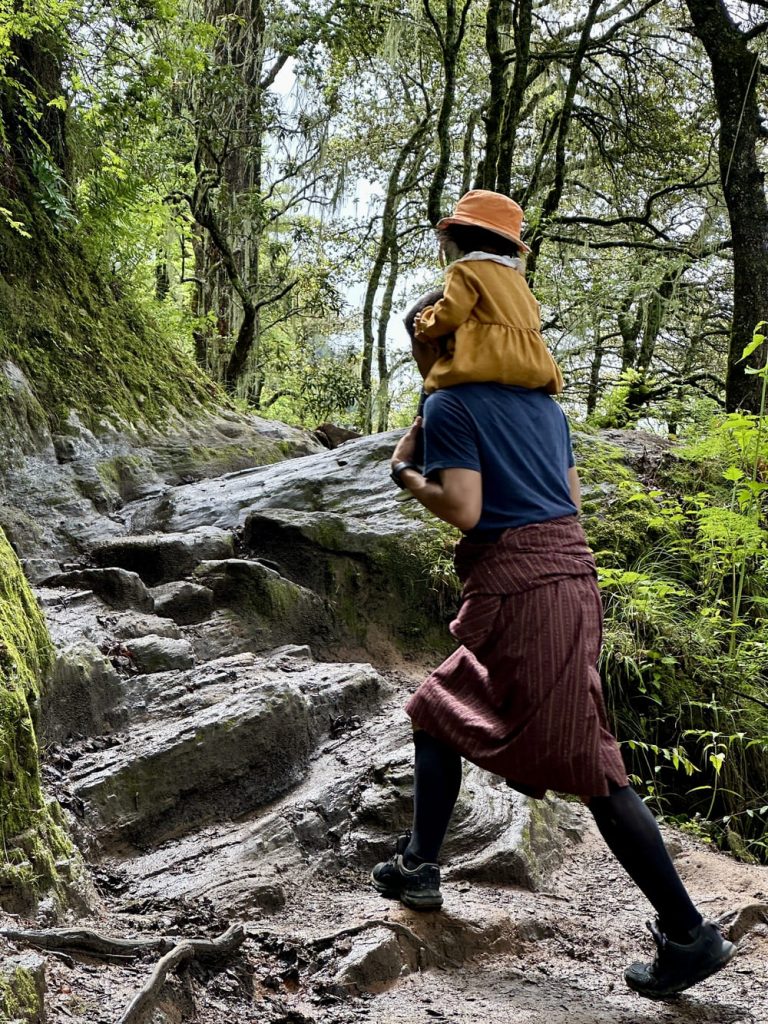
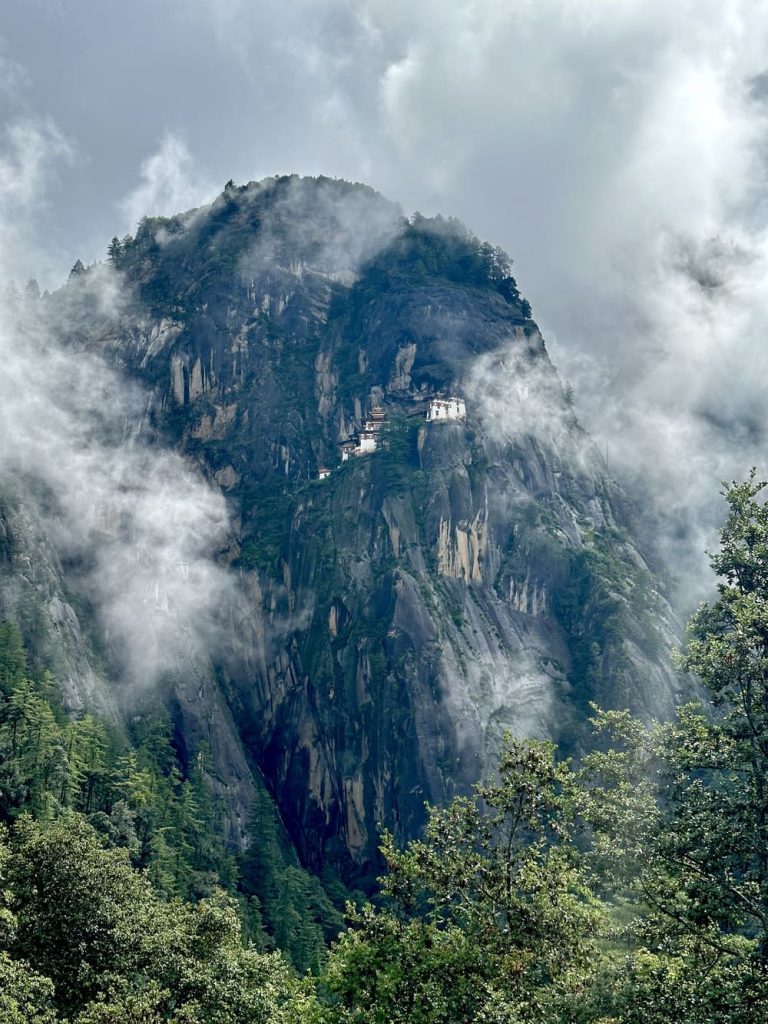
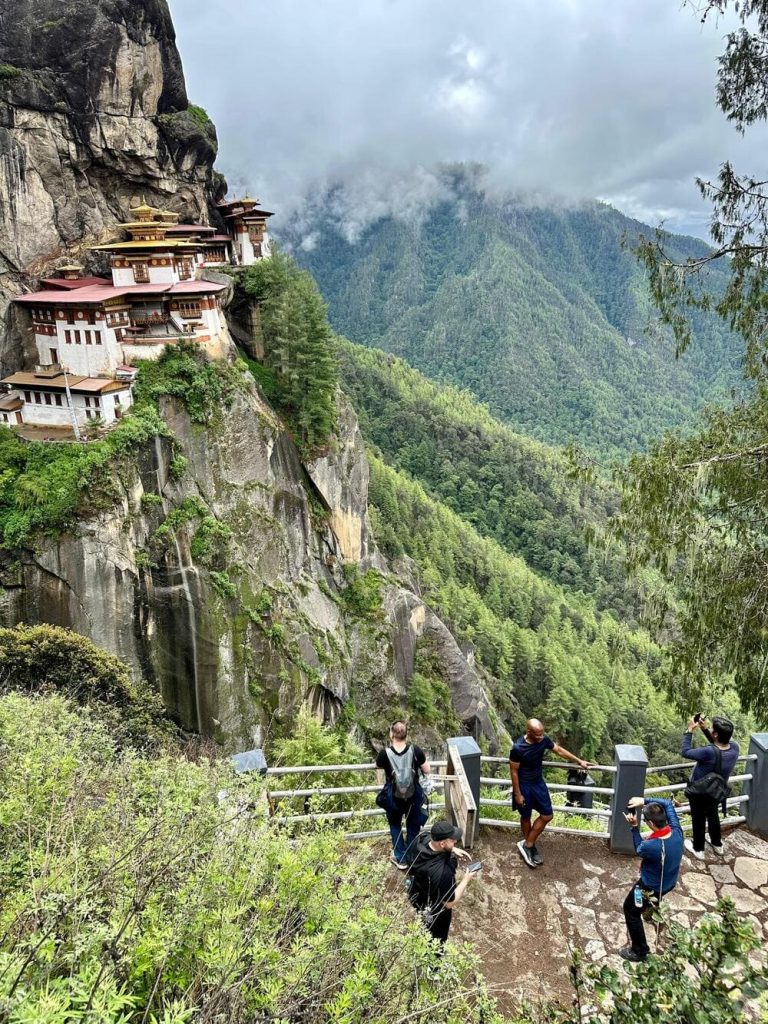
What should I pack and wear for the Tiger’s Nest hike?
To ensure a comfortable and enjoyable hike, it is essential to pack and dress appropriately:
Clothing
- Comfortable, moisture-wicking layers: Temperatures can vary, so wear breathable clothing that you can layer or remove as needed.
- Sturdy hiking shoes: Supportive and comfortable footwear is essential for the uneven and sometimes slippery trail.
- A light jacket or sweater: The weather can be cool in the morning and at higher elevations. There are also chances of rainfall
- Sun protection: A wide-brimmed hat, sunglasses, and sunscreen are a must.
Essentials to Pack
- A reusable water bottle (there are no water stations along the way).
- Snacks such as energy bars, nuts, or fruit to keep you fueled.
- A walking stick (can be rented at the trailhead) for added support.
- A small backpack to carry your essentials.
- A camera or smartphone for photos, but note that photography is not allowed inside the monastery. Photos are permitted all along the trail and outside the monastery, such as near the waterfall and bridge.
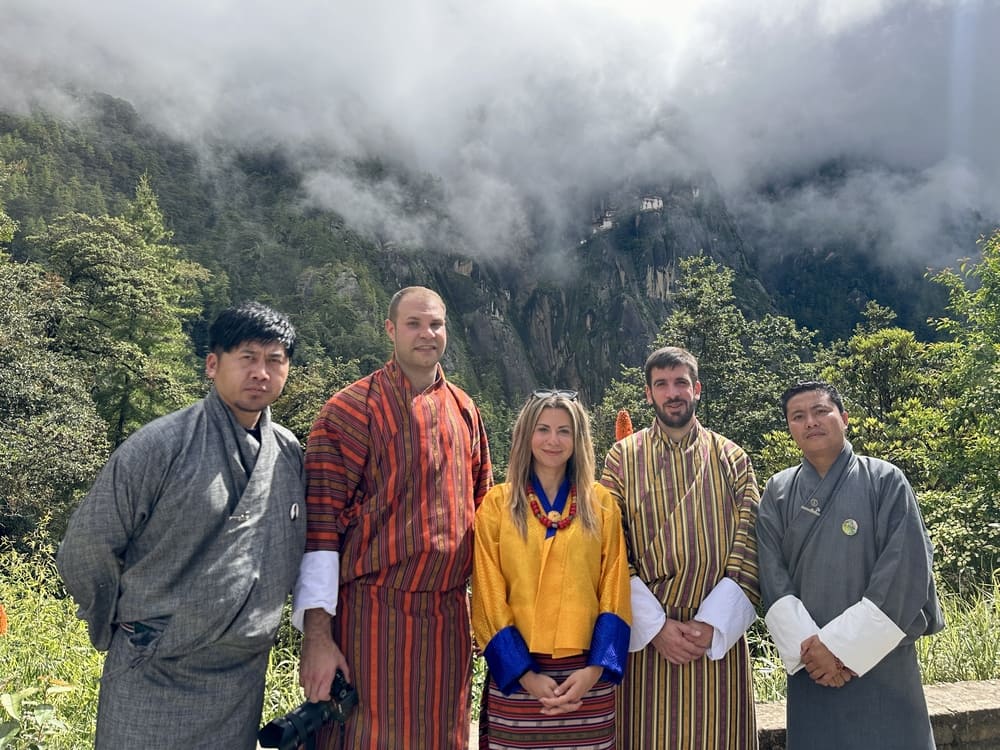
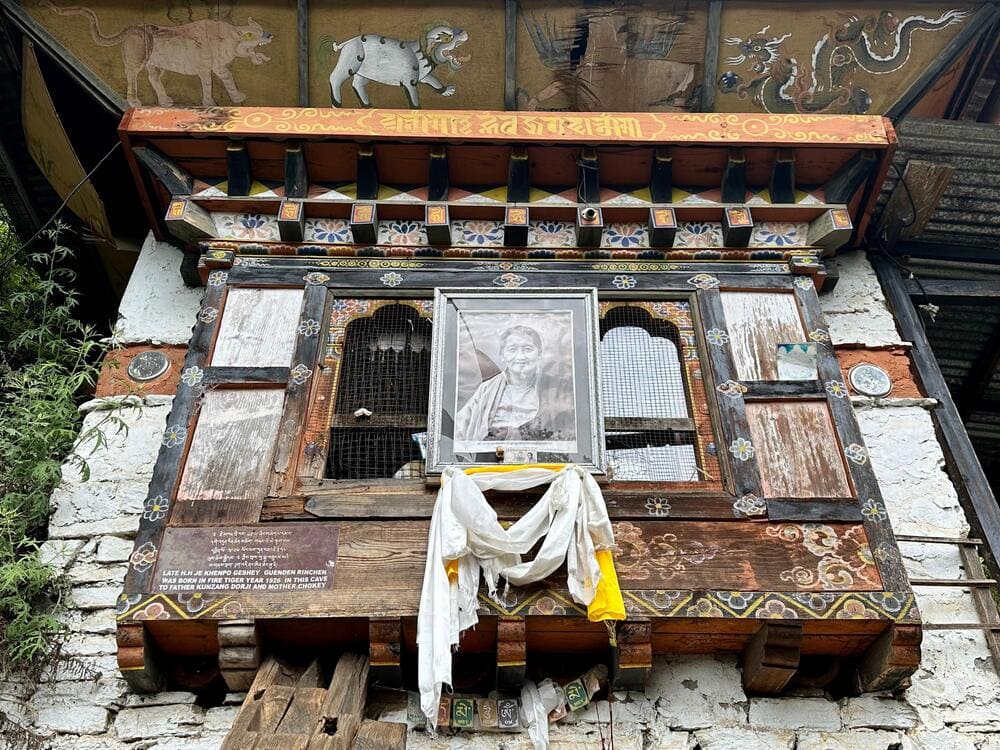
Is the hike to the Tiger’s Nest physically hard?
The hike to the Tiger’s Nest can be physically challenging, but it is manageable for most people with a reasonable level of fitness. The total elevation gain is approximately 520 metres, and the trail is mostly uphill with a combination of dirt paths and stone steps.
The difficulty primarily comes from the steep inclines and high altitude, which may cause fatigue for those unaccustomed to hiking in such conditions. However, the pace is entirely up to you, and many people take their time to rest and enjoy the scenery.
If you are unsure about completing the hike, horses can be rented to carry you partway to the midway café for around $20 USD. The final ascent must be completed on foot.
The hardest part of the hike is arguably the very last climb, with 700 steps leading to the monastery. Thanksfully, the best views are just before that, so you can stop there without regrets.
What is rhere to do at the Tiger’s Nest Monastery?
Upon reaching the Tiger’s Nest, you will be rewarded with stunning views, but not only. You’ll have the chance to explore the temples with your guide or alone. The monastery consists of several prayer halls, shrines, and meditation rooms. You can look at the murals, statues, and altars, but also meditate in the caves. Some areas are believed to be where Guru Padmasambhava meditated, and they hold spiritual significance.
Cultural etiquette at Tiger’s Nest
Please note that the Tiger’s Nest is a sacred site, thus visitors must observe proper etiquette. Shoulders and knees should be covered, and you must remove your shoes before entering temples or shrines. Photos are allowed outside the monastery but are strictly prohibited inside, like in most temples in Bhutan.
We ask that you maintain a quiet and respectful demeanor. If you’re not sure, ask your guide for advice.
Hiking to the Tiger’s Nest is a once-in-a-lifetime experience that blends natural beauty, cultural immersion, and spiritual reflection. The journey may test your physical endurance, but the sense of accomplishment you will feel upon reaching the monastery is unparalleled. For anyone visiting Bhutan, either on our Summer Tour or on our National Day Tour, this iconic trek is an unmissable adventure.





